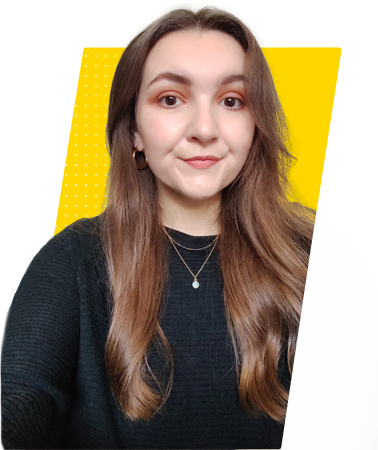Content Marketing
How to Structure Content for Ranking
Creating content that ranks can be a complex task, and no one-size-fits-all approach will work for every website, brand, or topic. Unfortunately, you’re at the mercy of search engine algorithms which can change at any time and can cause content that was previously driving traffic to plummet to the depths of the search results.
But there are ways you can craft your content for success using the best practices for SEO writing. Keep reading to learn how to structure content to give your pages the best chances of ranking.
What is SEO content?
Before we get started, let’s clarify what we mean by ‘SEO content’ or ‘content that ranks’.
SEO content is online copy written with the aim of ranking highly in the search results pages of search engines like Google. The higher your web pages rank, the more people will see them, click on them, read them, and become aware of your website or brand.
Typically, the end goal when creating SEO content is to attract traffic to your website, and funnel users through to a product or service they may be interested in. But these goals can vary depending on the website or business. The process of creating content in an effort to rank and drive traffic to your website is also known as content marketing.
Search engines, like Google, rank pages based on a wide range of factors, but relevance to a user’s search query is one of the key ones.
“Really, writing content for SEO is the same as writing content for users. If you have a page that satisfies the search intent and provides valuable information to the user, then it’s likely to be ranked well by a search engine as well.”
Using these SEO content writing tips can help you make your content relevant and useful to users, and therefore more likely to rank well in search engine results pages (SERPs).
Before you start
You might want to start right away on creating your content and getting it ranking, but there are a few things you should consider to give your content the best chance of appearing in those higher-ranking spots before you start writing.
Define your topic
The first thing you’ll need to consider before you start writing your SEO content is the topic of your article. If your business sells cameras, for example, you would want to create content that caters to people who are interested in photography.
One strategy for choosing a topic is to think about common questions someone would ask in relation to your industry. For this example, we’ll use the topic ‘how to take portrait photos’.
In terms of the content marketing funnel, this type of content would be considered ‘top-of-the-funnel’ content as it’s educational, useful to the broadest range of users, and isn’t targeted specifically at people who are looking to buy a product. However, if your business offered portrait photography lessons, this would be considered ‘middle-of-the-funnel’ as it’s directly related to a service you offer.

Keyword research
When you’ve decided on your topic, the next stage of preparing your content is keyword research. It’s worth noting that this insight can also help you choose your topic if you have a broader subject in mind, but need to narrow it down to a specific article title.
There are a number of keyword research tools you can use for this process, we typically use Ahrefs. If we put our main topic into Ahrefs, it will show us the monthly search volume for keywords relating to that topic, and give us ideas for other keywords to use in the piece.
As we can see below, the main keyword ‘how to take portrait photos’ gets 400 searches per month, meaning that many people are searching this topic. We can also see related keywords which receive between 10 and 50 searches per month. These related keywords could give us some ideas for subtopics to cover within our content piece.

Consider search intent
While you’re deciding on your topic and the keywords you’re going to target, you should also think about the search intent of the user when they’re searching this keyword. This is, essentially, the purpose of the search. What answers are users looking for when they search this keyword, and will your content provide those answers in a way that is helpful to them?
So, someone searching Google for ‘how to take portrait photos’ probably doesn’t want a list of the best cameras, or examples of nice portrait photos taken by other people. They’re looking for tips and useful advice that will help them take quality portrait photos themselves.
Google’s ‘people also ask’ section is another useful tool that can help you understand the search intent, and give you potential subtopics to include in your content. It shows other questions people ask in relation to your primary search term.

Titles, H1s, URLs and metadata
The title tag of your article is a confirmed ranking factor, and one of the most important parts of your content when it comes to SEO. Your title tag defines the page title for search engines, tells them exactly what your article is about, and is displayed in search results and browser tabs.
Page titles can also determine whether or not a user clicks on your page, so you want to make them engaging as well as SEO-friendly.
Always include your main keyword in your title tag, and try to keep it concise; titles can start to get cut off in search results after around 60 characters (or 575 pixels). Try using a snippet optimisation tool to create and optimise your title and metadata.
An example of a title tag for our topic could be:
How to Take Portrait Photos – 6 Essential Tips | Top Cameras
This title is 60 characters, contains our target keyword, plus an engaging phrase to encourage users to click, and ends with our (fictional) brand name.
Your H1 is a variation of your title which appears on the page itself, it should be similar to the title but shorter and without a brand name.
URLs
Google has confirmed that the URL of a page is a minor ranking factor, meaning it’s a good idea to have your main keyword in your URL. Consider making your URL as close to your main keyword as possible, but not too long, and not too vague.
For example:
www.top-cameras.com/portrait-photos ❌
This URL is too broad for the keyword and might get in the way of future articles you write relating to portrait photos. This URL would be better used for a category page that contains many articles about portrait photos.
www.top-cameras.com/how-to-take-portrait-photos-for-beginners-in-2023 ❌
This URL contains too much detail and makes it difficult to update the page, for example, if you wanted to add new tips in 2024.
www.top-cameras.com/how-to-take-portrait-photos ✅
This URL contains the main keyword without any unnecessary details and allows the page to be updated in the future without compromising the URL.
Meta description
An article’s meta description is an HTML tag that gives a short summary of your page’s content. It also shows up in the SERP below your title. Meta descriptions don’t have a direct effect on page rankings but they can influence whether a user clicks on your page or not.
Be sure to keep your meta description brief (120-158 characters), include your target keyword, and add a call to action such as ‘find out more’ or ‘check out these tips’.
Summarising your key points
Depending on the topic of your article, summarising the key points at the beginning can give users an overview of what the piece is about, and help them determine whether you’re answering their query. You’ll probably want to add this at the end of the writing process when you’ve finalised the rest of your content and can pick important points out of it.
This can be especially helpful if you’re writing a data-heavy piece that includes statistics. If you summarise the key takeaways at the beginning of the piece, readers can quickly see the important information without having to read through the entire article to find what they’re looking for. They can then choose to read on for more details.
Adding a ‘key points’ section can help to reduce your website’s bounce rate and keep visitors on your page.
Example from Self Inc. – The Cost of Leisure in the U.S.

H2s, H3s and beyond
Using headings in your copy has a number of benefits for readers and search engines. Some of these include:
- Targeting related keywords through subtopics
- Answering related questions users might have
- Making your content more organised and easier to read
- Enabling readers to scan the copy for different topics
- Providing more context for users and search engines
As a general rule, each level of heading falls within the previous level, so your H2s fall under your main topic title, H3s fall under each H2, H4s fall under H3s, and so on.
The hierarchy for headings on a page looks like this:

Headings example
Using our photography example, the hierarchy of the page could look something like this:
- H1: How to take portrait photos
- H2: Prepare your setting
- H3: Set up lighting
- H3: Choose the background for your photo
- H2: Posing your model
- H3: Give them something to focus on
- H3: Help them relax
- H2: Which lenses to use for portrait photography
- H2: How to take portrait photos outside
- H2: Taking portrait photos on a phone
- H2: More tips for taking portrait photos
- H2: Prepare your setting
During your keyword research, you’ll probably have found related questions and subtopics that you can use for H2s throughout your article. Adding these can help the page rank for more keywords, and therefore attract more traffic.
Make your content readable
When you land on a page and see a solid block of text, it can be instantly off-putting and make you want to find another page that’s easier to read. Structuring your content so it’s readable and easier for visitors to consume is an important part of reducing your bounce rate and making your page stronger.
Here are some tips for creating an SEO content structure that’s easier to read:
- Keep paragraphs short – This enables people to easily scan through the information without having to wade through a wall of text.
- Reduce long sentences – Where possible, try to condense long sentences into shorter ones that are simpler to follow.
- Include a table of contents – Allow users to click through to each section of your article so they can find what they’re looking for more quickly.
- Break up text with numbered lists or bullet points (like these) – Displaying information concisely in a list is a great way to cut out large chunks of text and summarise important points.
- Draw attention to key ideas – You could do this by making them bold, putting them in a callout quote, or putting them in a highlighted box to make them stand out.
- Add more headings if it makes sense – If you’re breaking one idea down into smaller points, consider using H3s or H4s to separate the topic out into simpler parts.
Add rich content to break up text
Rich content includes different types of media you see on a web page, other than text. Adding rich content to your page can make it more engaging and user-friendly.
Some examples of rich content include:
- Images – A static image can tell more of a story than simple text. With an image graphic or photo, you can summarise some of the points you’ve made in your post and break up long paragraphs of text. Adding keywords to image descriptions and alt tags can also influence its rankings in image searches. Be sure to focus on user experience when describing your image with alt text as well.
- Graphs and charts – If your piece involves data, consider adding charts that can visualise this data more clearly, making it engaging and easier for readers to understand.
- Infographics – An infographic is a longer-form image, typically used to visualise lots of information or data to make it easier to understand. Adding an infographic to your page makes it more visually engaging, and provides a shareable asset for social media and other publications.
- Video – Having a video on your page helps you connect with site visitors in a more immersive way, allowing you to break down your key points into easy-to-view media that can also be shared to other platforms.
- Interactive elements – Things like maps, calculators, and quizzes that page visitors can directly interact with create a much more engaging page, and help you to show more information without having to fill the page up with more text.
- Tables – Having a table with key information is great for user experience, and can break down complex topics into small chunks that are easier to understand.
By adding these engaging assets to your content, you’re giving the piece a better chance of ranking, even in competitive topics, as your page provides the user with more interesting insights and stronger content depth.
Add internal links
Internal linking is key when it comes to helping your content rank well in search engine results. When you add a contextual link within your content to another page on your site, you’re helping search engines understand the structure of your website and how your pages relate to each other. Linking from one of your pages to another also passes authority between the pages, which helps the page receiving the link to rank better.
Links to other pages on your site also direct users to other valuable content they might be interested in, leading to engagement with more of your pages which can lead to more conversions.
This is something to consider for your site as a whole; a comprehensive internal linking structure benefits all of your pages and keeps authority flowing throughout the site. It’s especially important to internal link to your key pages like product pages that are most likely to lead to conversions.
More content writing tips for ranking
Create a content ecosystem
As well as focusing on the individual page you’re writing, consider all of the content across your website. If you create multiple articles centred around one main topic, you’re signaling to users and search engines that you are knowledgeable about that topic.
This can also be known as a topical cluster, where a number of articles about, let’s say ‘portrait photos’ all internally link between each other, demonstrating that your site knows this topic inside out.
Think about whether the page can rank
As well as doing keyword research to determine if a particular keyword has enough search volume to drive traffic to your page, consider whether or not your site can rank for the keyword.
You can do this by analyzing competing pages that are ranking well for your chosen keyword. Look at the quality of their page, how much authority they have, and how many backlinks they have, and think about whether you could create a better page than what is currently ranking.
If you’re just starting out with SEO or your website is completely new, you’ll need to create some pages to build up your authority, but once you’ve established your site, be realistic about the kinds of keywords you’ll be able to rank for.
Summary
So there you have it. Try out some of these top tips for your next content piece and see if you can boost your rankings and increase your traffic.
Top takeaways
- Make sure your page is satisfying the user’s search intent and providing useful information that answers their query.
- Use keyword research to accurately target your main topic and subtopics, and to optimise your title, metadata, and headings.
- Add engaging elements like images, videos, bullet points, and interactive content to your page to make it more unique and user-friendly.








